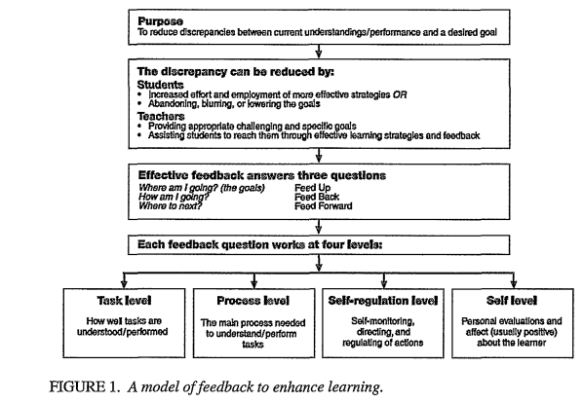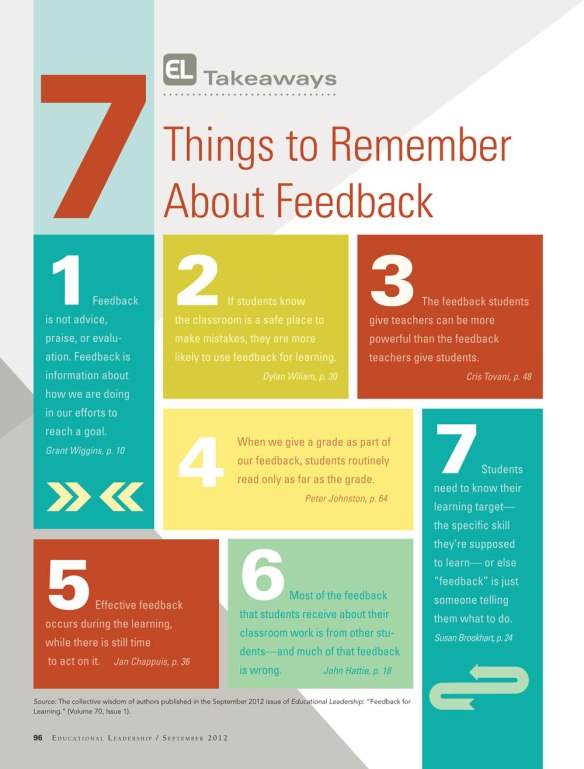6.4 Using Assessment to Provide Feedback to Students
Teacher’s feedback to students is timely and of consistently high quality.
“With great power comes great responsibility”
The sage advice Uncle Ben gave to Peter Parker (Spiderman, if you’re not familiar with Marvel) is highly applicable to teacher feedback. Teachers have the power to profoundly impact their students either negatively or positively with the feedback they give. The value of feedback to student learning is my biggest takeaway from this course.

This graphic illustrates the process of giving calculated, purposeful feedback to students.
Feedback comes in many forms — formal, informal, verbal, and written. High quality feedback is value neutral, focuses on intended learning, and identifies strengths and weaknesses. When giving feedback, teachers need to be mindful of how much the student can address at one time. In other words, do not overwhelm them with too many things to fix at once. You do not want to cause the student to give up. Timing is key, feedback needs to be given within a reasonable amount of time so that student are given optimal time for learning, reflection, and to make changes/improvements. Descriptive, effective feedback helps promote a growth mindset in learners. Feedback can be used to strategically close gaps in student learning and understanding. When a student receives a grade on an assignment, they need to understand why they received that grade. This includes knowing what they did well, and what they need to work on. In other words, excellent feedback encourages students to participate in metacognition and to take accountability and ownership of their learning. Too often, students receive a grade on an assignment without any explanation. This is a great disservice to the learner.

This graphic shows seven helpful pointers concerning feedback from teachers to students.
In my current position as a paraeducator I don’t have opportunities to give formal written feedback, but I will in my future teaching career. When giving feedback, teachers need to carefully consider their word choice. I am guilty of verbally giving vague praise and feedback such as “good job” or “nice”. While these types of statements may make a student feel good in the moment, it doesn’t give them anything valuable or useful to work with. Research shows that ineffective feedback can do more harm than good. Since my knowledge of feedback has expanded, I have been working on giving strong specific feedback. I will tell a student “I like how hard you’re working” or “I like how you are prepared for class and ready to learn”. This is more powerful than general approval.
As I get closer to my student teaching, I am thinking about the feedback I will receive. I want to learn and grow as an educator and for this to happen, I need feedback from my mentors. I will be actively modeling the growth mindset I want to promote in my students. During my student teaching I will need to be receptive to constructive criticism. This will come easily to me because I like learning from those who have more knowledge and expertise than I do. I need to be able to translate the feedback I receive into practice and actions. Feedback is a necessary part of the learning process for students of any age or ability. As a lifelong learner and teacher, I will be both giving and receiving feedback in an effort to further my own learning and my students’.
Sources:
Hattie, J., & Timperley, H. (2007, March). The Power of Feedback. Review of Educational Research, 77, 81-112. doi:10.3102/003465430298487
Seven Things to Remember About Feedback. (2012, August 21). Retrieved from http://inservice.ascd.org/?s=feedback



